A compendium of the wacky and weird: 10 strange camera designs that history has forgotten
posted Tuesday, May 3, 2016 at 4:59 AM EST
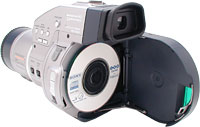
The good folks over at FStoppers published a new article by Alex Cooke yesterday that really grabbed our attention. Rather logically entitled "10 of the Weirdest Cameras Ever Made", the piece appealed to our love of photography, added a healthy splash of history and nostalgia, then neatly tied it off with a bow by adding some quirkiness to the mix. In the piece, Cooke presenting what he feels are 10 of the most bizarre camera designs from over the years, both film and digital.
From the bewildering medium-format Fuji camera that turned the idea of portrait and landscape photography on its head (no pun intended) to Ian Ruhter's delivery truck pinhole camera -- yes, really! We covered this ourselves last year, actually -- Cooke's article has it all. Intending to point readers towards it straight away with a very brief item of our own, we first shared it around the IR office... and promptly got ourselves more than just a little sidetracked with a discussion of some of our own favorite strange cameras.
What started out as a quick "Look at this, guys!" rapidly turned into a lengthy back-and-forth that consumed most of our afternoon as we roamed memory lane, and eventually snowballed from there into a full-blown article in its own right. But all credit where it's due, the FStoppers story was the progenitor of the piece you're now reading, so before you continue, click here to read Cooke's article in a new browser tab. You can come back for our thoughts when you're done.
OK, are you finished? Great story, we're sure you'll agree, but we immediately found ourselves recalling even more cameras we'd have loved to have seen on Cooke's list, either because they're epoch-making, extremely unusual or just plain weird. Unlike Cooke, though, we decided to limit ourselves just to cameras which were either mass-produced or probably intended to have been at the time of their conception, which ruled out more bizarre creations such as the turtle shell camera which Stan Horaczek over at PopPhoto turned up for a similar piece a few years back.
Whoops, we just sent you down another rabbit hole, didn't we? Okay, now that you're done with PopPhoto's article too, we humbly submit our own list of some of the weirder cameras we could recall from the last few decades of our own shared experiences. (Between us, the team at IR has probably a century and change of experience in the photo business, and to slightly misquote Family Guy, "We've seen some things, man! And some stuff!")
Without any further ado, here are our own top 10 Weird Cameras That History (Mostly) Forgot...
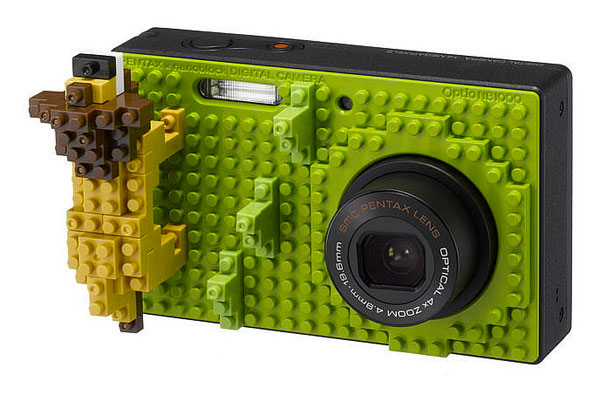
10. Pentax Optio NB1000
Over the years, Pentax and its current parent company Ricoh have made some very interesting and unusual cameras, from the Ricoh GXR with its interchangeable lens/sensor modules or the see-thru rainbow cornucopia that was the Ricoh LX-22 Xobbox to the bewilderingly themed, limited-edition Pentax K-x Korejanai Robot Model. For our money, though, the Pentax Optio NB1000 really takes the cake, however.
The Optio NB1000 was in essence a plain old Pentax Optio RS1000 with a different face plate -- if a camera with an available tartan vinyl skin can be called plain, that is. But what an even more extravagant affair the Pentax NB1000 was. Newly-equipped with its Nanoblock front plate, the Pentax NB1000 could be clad in the tiny, Lego-like blocks from Japanese toymaker Kawada, near-instantly transforming it from a plain old photographic tool to an objet d'art... sort of.
Who wouldn't want a snowman, say, or a pair of Easter Island statues protruding from the front of their camera? A stick-in-the-mud, that's who. Undeniably fun and yet totally impractical, we can't imagine that Pentax sold terribly many of these. Was the NB1000 weird, though? Unquestionably!
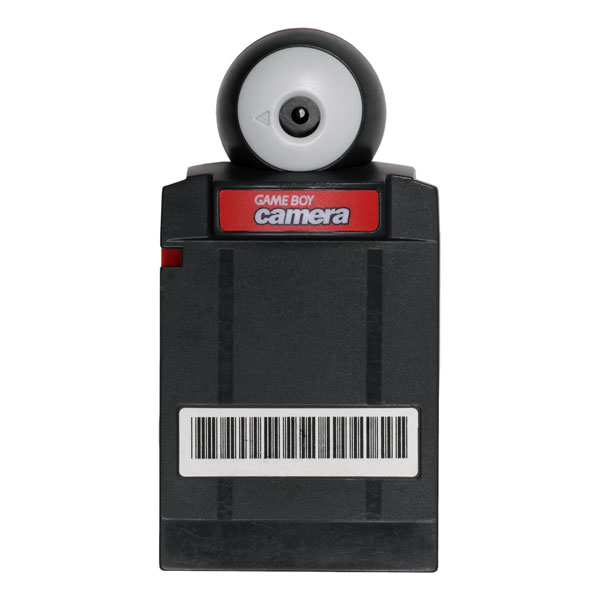
9. Game Boy Camera
The camera which introduced many a teenager -- and probably a fair few adults -- to the concept of digital photography, Nintendo's Game Boy Camera was a photographic device only in the very loosest sense of the term. With a paltry resolution of just 256 x 224 pixels in two-bit grayscale (that's black, white and two shades of gray), the Game Boy Camera's output was interpolated downwards by a factor of two, instantly dashing the high-res hopes and dreams of mega... err... kilopixel lovers everywhere.
Nevertheless an impressive piece of kit for its time, the Game Boy Camera was for a while recognized by the folks at the Guinness Book of Records as the world's smallest digital camera. Of course, it helped that it could piggyback off the much chunkier Game Boy unit itself for its power, screen, and most likely much of its processing and control as well. Affordably priced at just $50, its images could be printed on fast-fading thermal paper -- the same thing often used for printed receipts -- if you were willing to pay another $60 for a separate Game Boy Printer accessory.
Unlike the Pentax NB1000, the Game Boy Camera sold surprisingly well, and lasted a good four years or so before it was finally discontinued. A followup GameEye offering color imagery on the Game Boy Advance was planned, but never released.
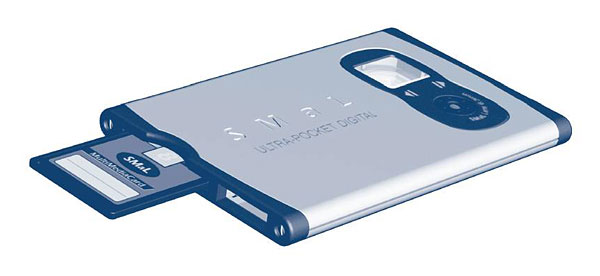
8. SMaL Ultra-Pocket
Sticking with the theme of record-destroyingly small cameras for a minute, we have the rather bizarrely-named SMaL Ultra-Pocket, a device which at the time seemed almost straight out of a James Bond movie. Almost all digital cameras at the time were chunky, clunky affairs. We're talking 2001 here, bear in mind. The words "pocket friendly" weren't much-used at the time. Three megapixel cameras were all the rage, and the smallest on the market -- the Casio QV-3EX -- was a full 1.3 inches thick.
At just 0.2 inches thick, the SMaL Ultra-Pocket was the stuff of sci-fi fantasy made real. In fact, even by today's standards, it's a svelte little beauty. (Bear in mind that the MultiMediaCard protruding from its side in the rather dated product rendering above is the exact same size as the omnipresent Secure Digital card your camera likely uses today.) Well, okay, maybe it wasn't beautiful, but it was certainly slender. So what if it had a paltry resolution of just 640 x 480 pixels, and lacked any screen on which to review your images post-capture, or even much in the way of controls?
SMaL left commercialization of the Ultra-Pocket to other companies such as Creative Labs, Fujifilm, Logitech, Oregon Scientific and Radio Shack. The best-known of these was the Fujifilm AXIA eyeplate, which left us wondering just how they managed to choose a worse name than the "SMaL Ultra-Pocket". By all accounts, though, the design did pretty well for SMaL, which was eventually absorbed byCypress Semiconductor in early 2005. Somewhere north of a million units had been sold over several iterations, with the final model launched in 2004 having finally reached the three megapixel point, just a few years behind the rest of the market. Presumably more than a few would-be spies were among its owners.
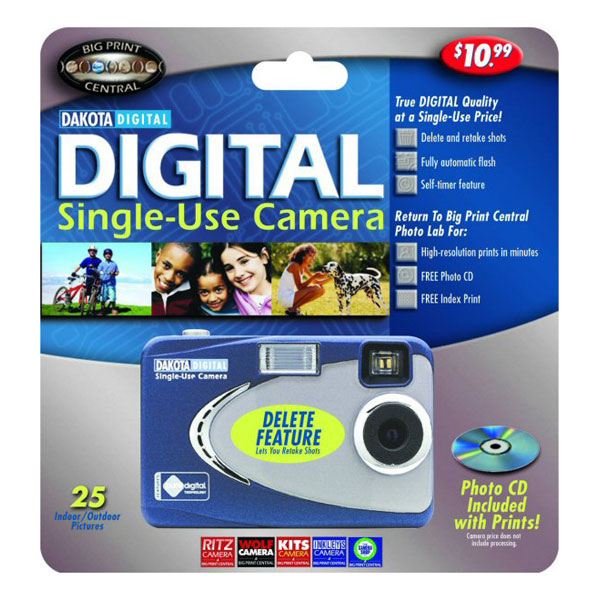
7. Ritz Dakota Digital Single-Use Camera
The very notion of a single-use digital camera might seem rather wasteful, but there was a brief period when there was just such a product on the market. In fact, there were actually quite a few of them from a variety of retailers, although the Ritz Dakota Digital sticks in our minds best of all. It was the somewhat-logical end play from an industry which really didn't want to let go of the revenue-boosting disposable film camera, but which struggled to find a justification for its continued life in the digital era.
The concept of a disposable digicam was first floated and later commercialized in Japan, but its US equivalent was brought to fruition by a partnership between the aforementioned SMaL Camera and San Francisco-based Pure Digital Technologies. (The latter went on to be best known as the company behind the Flip Video Cameras, which were briefly all the rage before being taken over by Cisco and, just two years later, rather unceremoniously shuttered.)
These cameras weren't quite as bad for the environment as they might have sounded, however, because truth be told, they weren't actually disposable. Instead, they just had an intentionally-obfuscated data connection which was hidden behind a sticker on the side of the camera body. Instead of processing film inside the camera, the photofinisher would download photos through a proprietary cable for printing, before sending the camera itself off to be cleaned up, prepared for reuse, and repackaged.
The gaping hole in the business model -- and one which should have been blindingly obvious in hindsight -- was that hackers saw these cameras as a way to gain very cheap entry to the digital photography game. At $10-20 a pop, they bought disposable cameras which doubtless cost the retailers far more, and then reverse-engineered the hardware and software necessary to get the photos off the camera by themselves.
An all-too-predictable arms race ensued, with Pure Digital, SMaL and their partners releasing newer versions -- including a disposable camcorder -- and hackers breaking into each new model in short order. Within a few short years, the disposable digital camera market was abandoned, relegated to the history books under the chapter "products we probably should never have made".
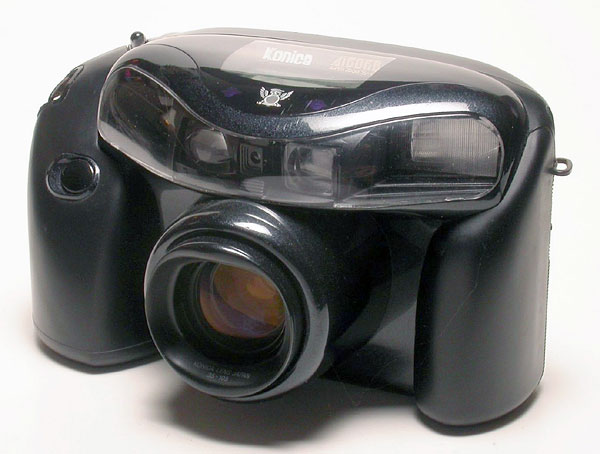
6. Konica AiBORG
With a name incorporating a nifty little bit of wordplay -- both "AI" (or Artificial Intelligence, if you prefer) and "cyborg" are hinted at in its AiBORG branding -- this interesting little film camera had a face only Darth Vader could love. Or perhaps famed German industrial designer Luigi Colani. We're pretty sure he'd be right at home with the AiBORG, actually. All bar the slightly tacky glitter-finish plastic, perhaps; we can't say that we remember glitter featuring too prominently in his futuristic-meets-organic-and-then-gets-put-too-close-to-the-radiator styling.
Either way, if you were willing to look beyond its unconventional exterior, the AiBORG was a rather interesting device. That's perhaps not too terribly surprising, as Konica had made a bit of a name for itself with unconventional cameras. For example the Konica Kanpai, a voice-activated film camera, could swivel on a tripod to aim towards the source of a loud noise -- someone shouting "Kanpai" (or "Cheers!") at a party, perhaps -- and then capture a photo, all by itself.
Launched in 1991, the Konica AiBORG was packed with external controls, even including a four-way joystick. You might wonder why you'd need this on a relatively compact film camera, but it hinted at a feature heavily promoted as a world's first. As well as controlling the 35-105mm zoom lens, the AiBORG's joystick was also used to choose one of five focus points, although the camera actually only had a single-point AF sensor which was moved from side to side mechanically.
It also featured some fairly unusual modes and functions for what was a relatively compact body, including one specifically for taking photos of the image on a TV, another capable of taking a timed exposure of roughly 100 hours in length, and still more allowing 39-frame interval or multiple-exposure bursts. There's a pretty in-depth user review over at 35MMC.com.
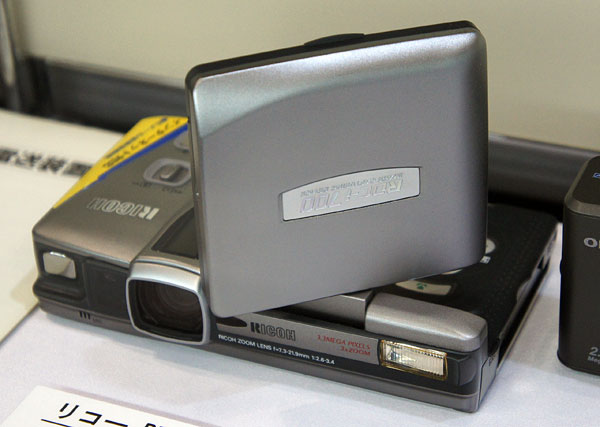
5. Ricoh RDC-i700
At the outset of this list, we alluded to Ricoh's unusual cameras, and the Ricoh RDC-i700 certainly bears mention as one of the company's standout efforts. Not that it was particularly unusual in its imaging pipeline, sporting the same three-megapixel resolution as everyone else, and a fairly typical 35-105mm-equivalent zoom lens. The hybrid autofocus system, pairing both contrast-detection and passive AF, was perhaps a little unusual in a relatively compact camera, admittedly, as was its curious horizontal, brick-like form-factor with a flip-up screen.
Close the screen, and it struck us at the time as looking a whole lot like a VHS tape with a lens on one side, which doubtless has the youngsters among us looking slightly confused. (If you're one of them, we'll just say that a VHS tape was like a big Blu-Ray disk with awful picture quality, and which was incredibly slow to change tracks -- and let's leave it at that!)
But some of the tech in the RDC-i700 was surprisingly far ahead of its time. In the last few years, touch-screens and in-camera networking technologies have become de rigeur, but at a whopping list price of US$1,200, the Ricoh had both all the way back in the year 2000. And not just that, the touch-screen LCD panel had a diagonal of 3.5 inches, huge at the time. There was even a touch-screen stylus.
Add in its networking capability, and the Ricoh RDC-i700 was effectively a modestly-powerful PDA melded with a camera. You could browse the web, send emails or transfer images via FTP, set up lists of images to be captured and have them automatically turned into Word, Excel or HTML documents, build presentations in-camera, and even send text images as faxes. (Youngsters: Go and ask your grandparents what a fax was! There may be a test later.) Of course, back then it didn't support Wi-Fi: Instead you had a choice of installing a full-sized PCMCIA Ethernet card for wired networks, or a cellular modem card for dial-up internet.
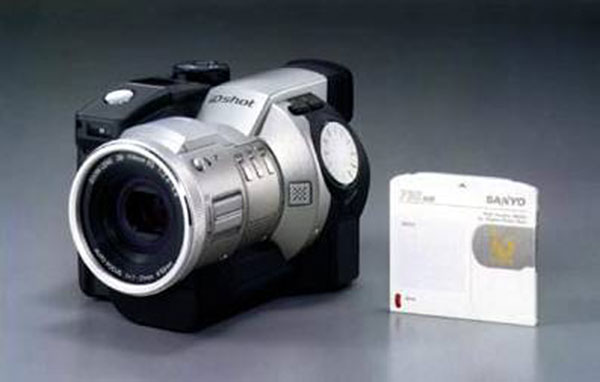
4. Sanyo IDC-1000Z
Back in the FStoppers article which was the source of all this -- Remember that? Yeah, we'd almost forgotten too. We have a tendency to be a bit verbose around these parts some times! -- they referenced the Sony Mavica floppy disk cameras. We were all set to offer the CD Mavica cameras (one of which is shown in the thumbnail atop this page) as a rebuttal, and then we remembered the Sanyo IDC-1000Z. Where the CD Mavicas were quite unusual, the Sanyo '1000Z was just plain bonkers.
It used an unusual magneto-optical floppy disk format that almost no one had even heard of at the time, let alone seen in person. Sure, it could store 730MB of data on each disk, but what good was that if you had to buy a new drive for every machine you wanted to use the camera with? And forget taking one to your friends' house or colleague's office and finding the right drive in use. Instead, you'd have to rely on USB or FireWire connectivity.
The latter was pretty fast, but again, finding a FireWire port on the typical Windows computer in 2000-2001 was a bit like winning the lottery, except not quite as common. And the USB port was the slow-as-treacle USB 1.1, the USB 2.0 standard still being brand-new at the time. Offloading a single disk via USB could be expected to take ten minutes or more.
All of which could be forgiven if the IDC-1000Z wasn't a big, chunky camera with a disappointing 1.5-megapixel resolution and a puny 38-114mm 3x optical zoom lens. As was, though, the Sanyo didn't live up to expectations, and nor did its unusual storage medium see widespread adoption. Both quietly vanished into the sunset, and nobody really noticed -- quite a shame for a camera which could potentially have been a game-changer had it just offered better imaging capabilities. (No wonder we can't find a higher-res image than the rather blurry one we had to upsample from our 16-year old coverage above.)
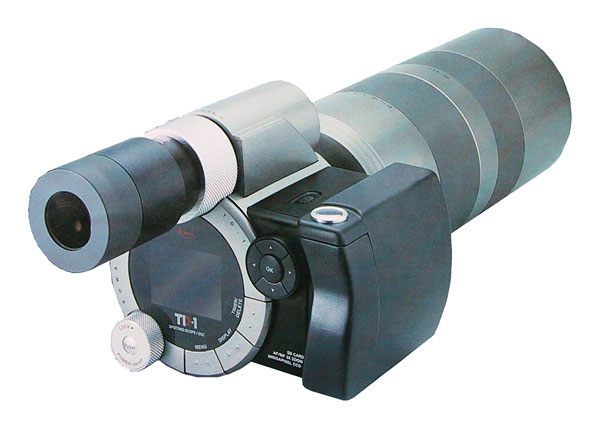
3. Kowa TD-1
OK, hands up anybody who remembers the Kowa TD-1. Anybody? No? We didn't think so. To call this camera specialist would be a severe understatement. With a powerful 450 to 1,350mm-equivalent, f/2.8-4.0 3x zoom lens, you could pretty much bring people from the next town over into your living room, so long as you didn't need great image quality, you had a solid tripod and they weren't moving around too much. Wide-angle or fast-paced sports shooting you could forget about, however.
Essentially, the Kowa TD-1 was a spotting scope with a 3x zoom digicam built in, piggybacking off the telescope optics. (Ever held your camera or smartphone lens up to the eyepiece of a telescope? You were kind of doing the same thing.) A reflex mirror inside the camera acted much like that in an SLR, choosing whether the light reached the image sensor or viewfinder.
This choice handily meant that you could forego the camera portion altogether if you ran out of batteries, which you probably wanted to do pretty often, given that the low-res three-megapixel image sensor was basically obsolete by the time the TD-1 went on sale. Still, kudos to Kowa for trying something different. (Back in those heady days of the early noughties, it seemed that everyone and their uncle saw a big future for themselves in the camera market.)
Oh, and did we mention that the Kowa TD-1's designers liked circles? We mean they really liked circles. They liked them so much that the TD-1 even placed circles inside circles, on top of other circles. All bar the handgrip, there was barely a straight line in sight on the TD-1, and it certainly made for an interesting design aesthetic!

2. Zenit PhotoSniper
Resident news maven Jeremy Gray contributed the Zenit PhotoSniper to our list, and we have to confess to not knowing too terribly much about it, given that it was manufactured in two different models and in very small numbers from the early 1940s thru the end of the '60s. Boy, does it ever look the part, though. Camera-Wiki.org has it that the PhotoSniper was originally made for military use, and we'd believe it.
There are no cutesy circles in sight here: This thing is all business. A pistol grip -- and we do mean a pistol grip, complete with the trigger -- was accompanied by a shoulder stock for stability. We've never seen one in person, but we'd imagine the temptation is strong to say "Pew, pew, pew!" while framing through the viewfinder on the attached Zenit camera body. A 300mm lens rounded out the setup, which probably meant your subject was close enough to hear your pretend gun sounds unless you were framing them pretty loosely or remembered to be quiet. But we still want to try one. We'll whisper, and you'll never hear us coming!
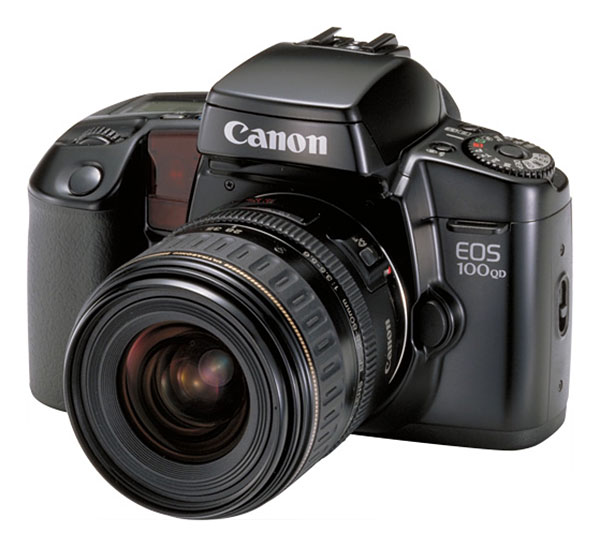
1. Canon EOS Elan
We hemmed and hawed over what to put in the number one spot for this roundup. Our decision came down to a single feature which was so memorably bizarre that it stuck somewhere in the back of Senior Reviews Editor Mike Tomkins' memory for a full quarter-century, without once having discussed or even seen mention of it. And that narrowed our choice down to two camera models. (Or six, if you consider the different regional brand names used by Canon to be different cameras. We won't, in this instance.)
The folks over at PhotoNotes.org ended up unknowingly making the call for us, by claiming the Canon EOS Elan to have bested the earlier EOS 10 S in its implementation of this feature. (Incidentally, the Elan was known as the EOS 100 in Europe, and the EOS100 QD or 100 Panorama in Japan. The EOS 10 S was the EOS 10 in Europe, and the EOS 10 QD in Japan.)
So what was the standout feature on what would otherwise look to be a fairly straightforward -- if fairly dated -- EOS-series camera from late 1991? Both of these film SLRs featured built-in infrared sensors in their sides, adjacent to the film rewind button. And for each, an optional barcode reader was offered as an accessory, communicating with the camera itself by IR.
What on earth did a film SLR need a barcode reader for, we hear you asking? It was a case of technological wizardry over common sense; of ease-of-use made unintentionally and unnecessarily awkward. Attempting to make it so that amateur photographers could get the photos they were after without needing to understand how to actually use a camera, Canon had imbued both models with an autopilot of sorts, that would handle the basics based on a knowledge of the image the would-be photographer had in mind.
And that's where the barcode reader came in. Along with your camera, EOS Elan and 10 S owners received a 33-page booklet entitled "EOS Photo Files", with a total of 23 different photo types shown in full color. Alongside each one was a 2D barcode which you'd swipe across the sensor accessory, allowing it to communicate with the IR sensor on the side of the camera, and the settings would be configured appropriately for the photo type you'd chosen.
And if you really wanted to get serious about your casual photography, you could buy a separate companion book for your SLR called "EOS Barcodes 101", jam-packed with another 111 full-color pages and 107 different photo types for your scanning delectation.
There was just one flaw with this otherwise very clever feature: You had to carry these books and the barcode reader around everywhere you went, trying to take care of them while regularly pulling them out of your camera bag or pocket, juggling the camera, book and reader accessory, and trying not to crease the barcodes or drop the reader on the ground. You could just as easily have read a few short sentences on how to adjust a couple of on-camera controls to get the same settings, and learned something about photography in the process. And honestly, you'd likely have saved time.
Mike remembers playing with the Asian variant of the EOS Elan in the Canon showroom in Hong Kong, bright sunlight shining in through the window, and struggling to get the reader to scan codes near the off the glossy paper and near the spine of the book, let alone to get the reader to talk to the camera body -- and that with a brand-new showroom setup.
There are many really great ideas Canon has come up with over the decades. One we'd love to see return was the interesting Depth of Field AE mode from the Asian variant of the EOS Rebel S II, which Mike ended up buying as his first Canon camera (and his first non-manual SLR, to boot).
This was very intuitive, letting you indicate your desired nearest and furthest depth of field by simply aiming the camera first at one subject, and then the other, focusing on each in turn. The camera then did the math necessary to figure out the settings to ensure everything between the two was in focus. We've seen something similar in more recent cameras, but it relied on being able to fit both subjects under autofocus points at the same time without reframing, which made it far less useful.
But while we'd love to see that Depth of Field AE mode option return, we wouldn't want to see the barcode scanner come back. Canon correctly assigned that one to the annals of history, chalked it up to experience, and went on to much bigger and better things -- and good on them for recognizing the fumble and moving on!
A few honorable mentions
And that brings us to the end of our list, and a rather fun stroll down memory lane. (Occasionally, down someone else's memory, second hand via a little Googling, we'll admit.) It's been fun, and we can see the challenge faced by FStoppers in their article. (If you didn't go ahead and read that already, you'll find it here.)
You just can't get all the cameras you want into a list like this, or you'll be here all week. We had so many more we'd have loved to mention ourselves: The interesting Canon RC-701, the first commercial still video camera which stores images on analog floppy disks. The Logitech Fotoman (aka Dycam Model 1), a 1992 CNN video for which we can't resist sharing above. The Pentax Optio X, which took the swiveling form factor of cameras like the much-beloved Nikon Coolpix 900-series and *500-series cameras, and then rather bizarrely didn't take advantage of the opportunity to hide the lens inside the width of the swiveling portion, and so still had to extend and retract its more fragile optic. Pretec's unusual SD card camera. (Yes, really. The SD card *was* the camera.) And so, so many more.
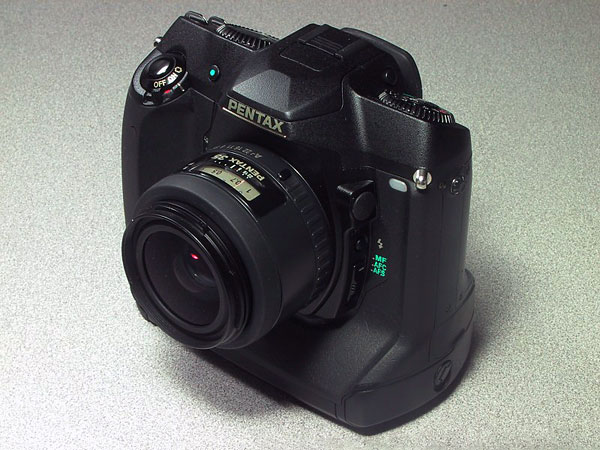
And that's just the cameras which reached the market. We also wanted to cover some of the really unusual concepts, some of which we were lucky to see in person, occasionally even as fully-functional prototypes. The original Kodak Ecam D-5000, an entirely in-house three megapixel camera with standard K-mount which, if sold, would have been the world's first DSLR. (Instead it was sold only to the government, according to Jim McGarvey's excellent DCS Story document.) The 1981 Sony Mavica prototype with its proprietary floppy disk that would go on to be used in the aforementioned Canon RC-701. The unnamed Pentax DSLR prototype that could have put the company into the full-frame market several years before its rivals at Canon and Nikon. Not to mention bewildering Canon prototypes designed, once again, by Luigi Colani, as well as one presented at EXPO 2010 which probably wouldn't have looked too out-of-place in Stanley Kubrick's 2001: A Space Odyssey.
But alas, we've reached the end of our piece. These and more will have to wait for another day. But what of you, dear readers? Which cameras would be on your list of the weirdest, coolest, or just plain most bewildering? Let us know in the comments section below!
(Konica Aiborg image courtesy of John Nuttall / Wikimedia Commons; used under a Creative Commons CC-BY-2.0 license. Ricoh RDC-i700 image courtesy of Morio / Wikimedia Commons; Zenit PhotoSniper image courtesy of LordKalvan / Wikimedia Commons; both used under a GNU Free Documentation license. Images have been modified from the originals.)